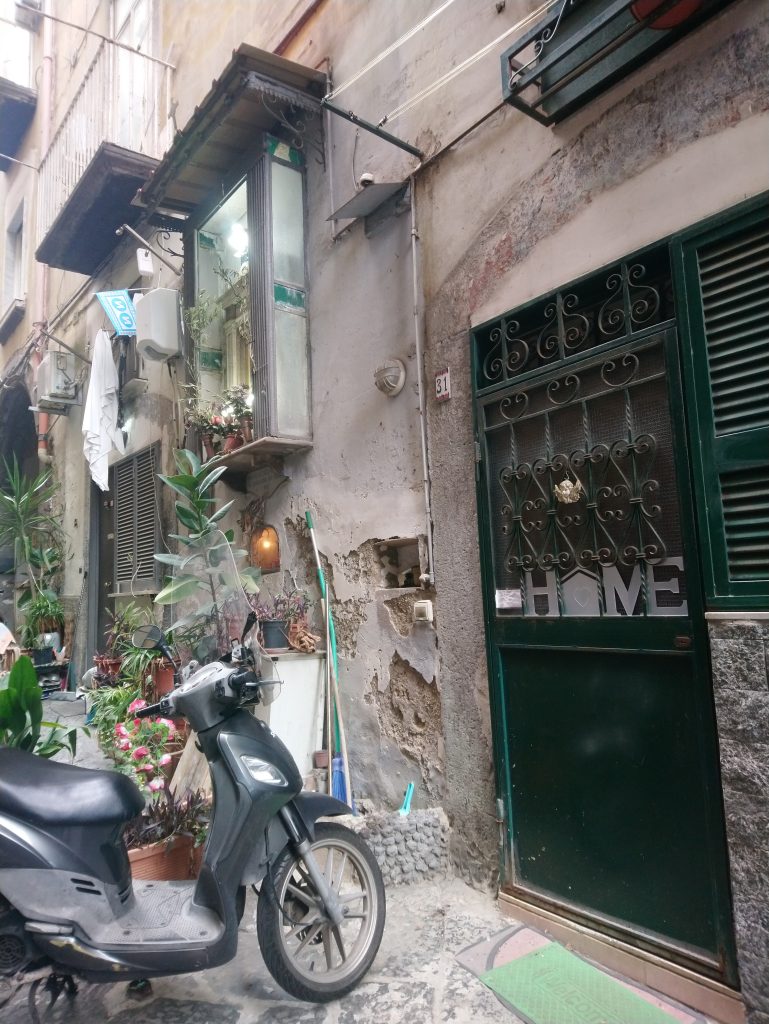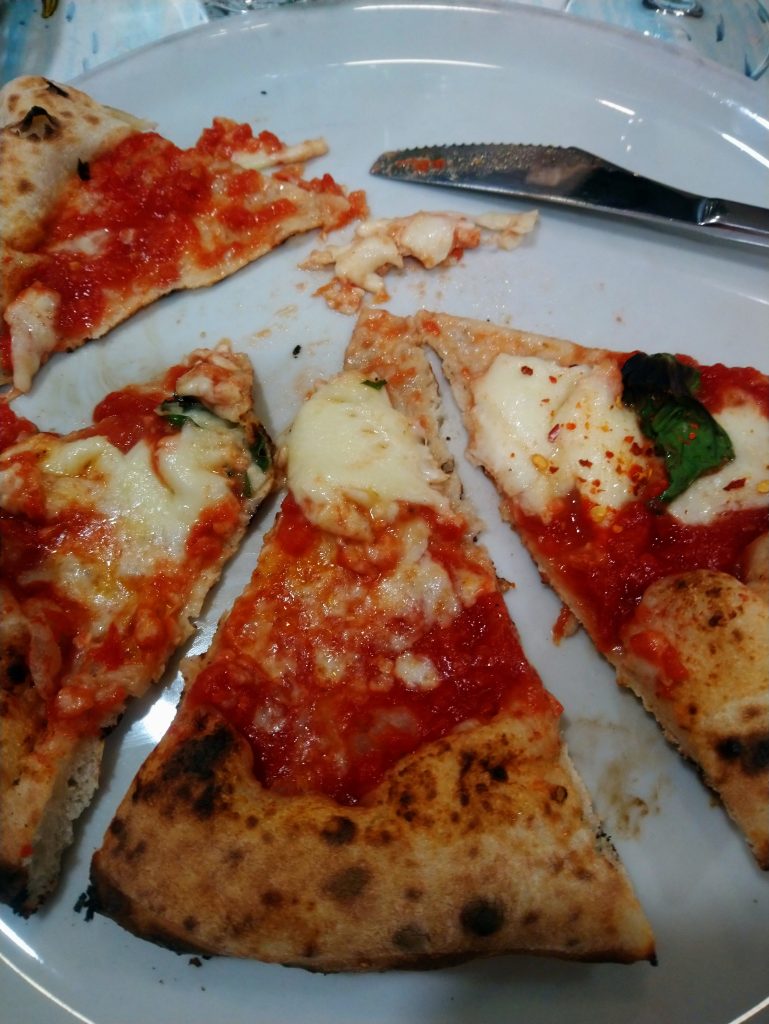We love a good walking food tour, so on a recent trip to Naples we booked one for the second morning of our stay. We selected the ‘Taste of Old Napoli’ tour from Eating Europe as it started early (10am) and included lunch. As we were virgin visitors to this vibrant city, the tour provided us with new found knowledge and set-us-up with a good understanding of Neapolitan food culture and history.
Aldo, our tour guide is warm, extremely enthusiastic, and very knowledgeable about his home city, Napoli. He gives us a local’s perspective on where to seek out the best places to eat plus an insight into the favourite meals and snacks Neapolitan’s like to eat.
We begin with an espresso and a Sfogliatella pastry in a chic and historical café not far from the impressive Galleria Umberto1st shopping mall. A sfogliatella is a shell-shaped, thinly layered filo pastry filled with ricotta cheese (see photo 2). While we inhale coffee vapors and admire the delicately made filo masterpiece, Aldo explains to us about the preparation and method behind the perfect Neapolitan coffee. In the majority of the city’s cafés, these are made with the old-fashioned hand-levered barista machine which produces a strong shot of espresso topped with a thick dark and rich créma. Both the espresso and the light airy creamy pastry go ‘perfecto’ together; it’s a ‘duetto’ harmonised in the heavens, and an experience which definitely starts the tour off on a high note for us!






After pausing at a number of prominent historical city sites, our small group moves on to visit a Trattoria which is known for its pizza but also does take-away street food specials like seafood cones and slices of ‘fried’ pasta. It is the first time we try fried pasta, known locally as a ‘Frittatina’- which is the ultimate Neapolitan comfort food! Our thick and creamy frittatina slice is a really satisfying, tasty snack. It’s the ideal dish to have for lunch or to pack for a picnic and a great way to use up left over pasta and vegetables etc. Aldo generally describes how a frittatina is made:
Already cooked pasta (most varieties will do) is added to beaten eggs and any other ingredients that you may have in your fridge like ham, courgette or even peppers, all these ingredients are seasoned, combined, compacted and cooked in a deep frying pan and then this pan-shaped pasta mound is sliced into triangles to serve. (You'll have to do the tour to get the finer recipe details and tips!)
Meanwhile, our friendly guide shares his own food memories in relation to this traditional family dish. He even passes on a complete recipe for us to try out for ourselves, when we get back home. (As you can see in the middle photo below, it looks a lot like a Spanish Tortilla but it is made by adding pasta instead of potatoes and tastes completely different of course!)



We do more walking around the Spanish Quarter area of the city known as Quartieri Spagnoli while all the time receiving nuggets of local lore from Aldo. This neighbourhood is a myriad of narrow streets buzzing with the sound of Piaggios which flit by us, bouncing between parked cars and camera-clicking tourists! You have to have your wits about you here to avoid getting bumped into! Aldo guides us as we amble through the maze, a mixture of city dwellings and commercial enterprises. Many of the tiny on-the-street trattorie (family owned restaurants) are quirky and colourfully decorated to catch passer-by’s attention. There are green grocers with stands overflowing with fresh fruit and veg and some very impressive large artichokes on display.
We head for lunch on the out-skirts of the quarter, in a family-owned Pizzeria. Our meal consists of a Primi of Caprese Salad, and a Secondi of the classic Pizza Margherita paired with a large glass of Vino Russo and lots of bottled water on the side. Again, Aldo explains the way to make a Caprese Salad taste sublime is all in choosing the best produce- of tomatoes, the freshest mozzarella, a mature balsamico, and extra virgin olive oil. But Aldo advises to never make the mistake of pouring balsamic vinegar on to your mozzarella cheese, as this will over-power its delicate flavour, it should only to be drizzled with olive oil!!








Later we hit the streets again, and head for dessert to a Coffee, Chocolate and Gelato Café called Gay-Odin (yes, we did indeed fit some dessert in!!). Here we discover…the joy of…deciding what gelato to choose…while browsing their glistening glass counter. It takes us sometime to decide but it’s a lavish two-scoops of gelato all round; we opt for one scoop of dark chocolate and a scoop of pistachio nut. While both are deliziozo! – the chocolate scoop has such a luxurious and intense hit that you know it’s made with quality dark chocolate. It’s the one that’ll stay etched as a food memory and the one we’ll dream about!
As we say Arrivederci to Aldo, we leave feeling well satisfied with our bellies full, our minds enlightened and our hearts ignited by Napoli; the city of warm welcomes, heavenly food, and spirited souls.



Conclusion
- Naples has an ancient and well established food culture. It is a city bursting with fabulous fresh food from markets to bakeries and its unique street-food options. It’s cram-packed with amazing hospitality options from pizzerias to trattorie to high-end restaurants.
- Overall, this tour may be pricier than some of the other food tours offered in the city, but for our money we got breakfast, lunch, dessert and more, all included, in the designated three and a half hours.
- Extras included- a recipe, a file shared with local restaurant recommendations and a truly personable tour guide 🙂
NB: This is an independent review–Tasteful Thinking has no affiliation to the Eating Europe Tour Company.


